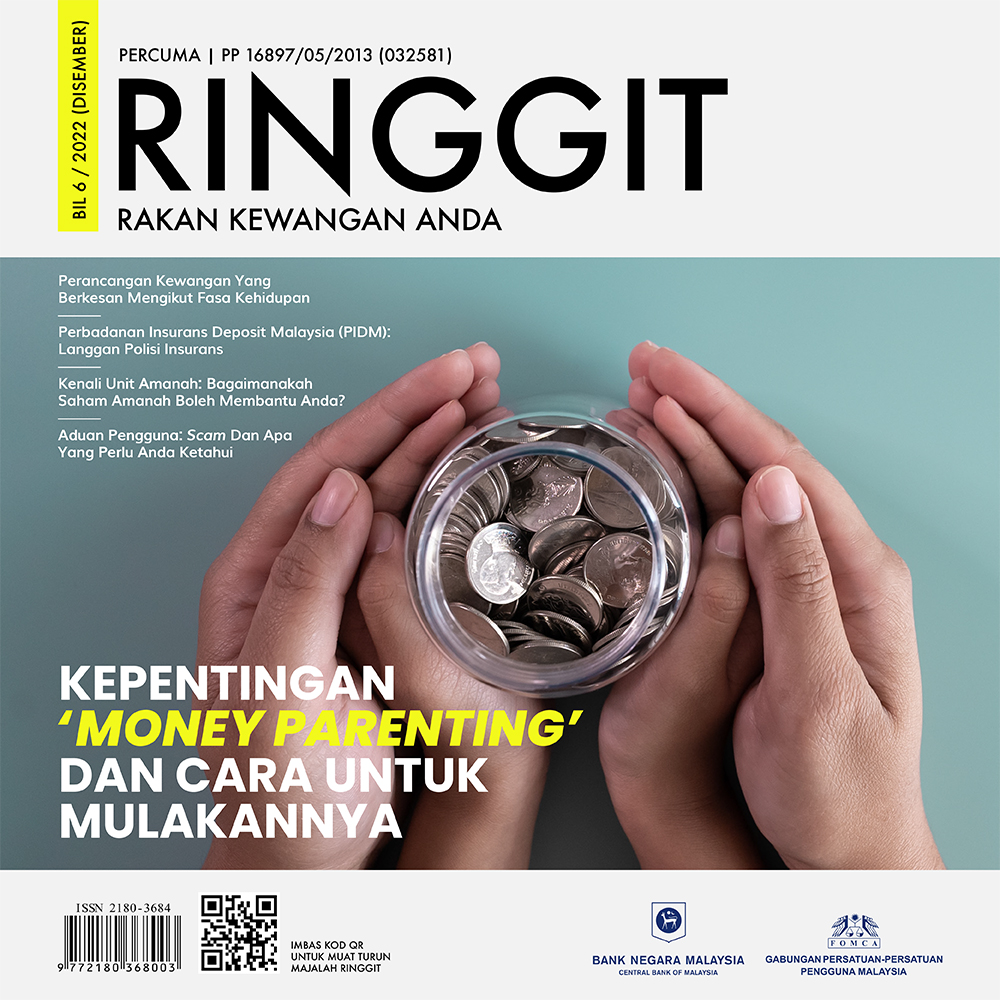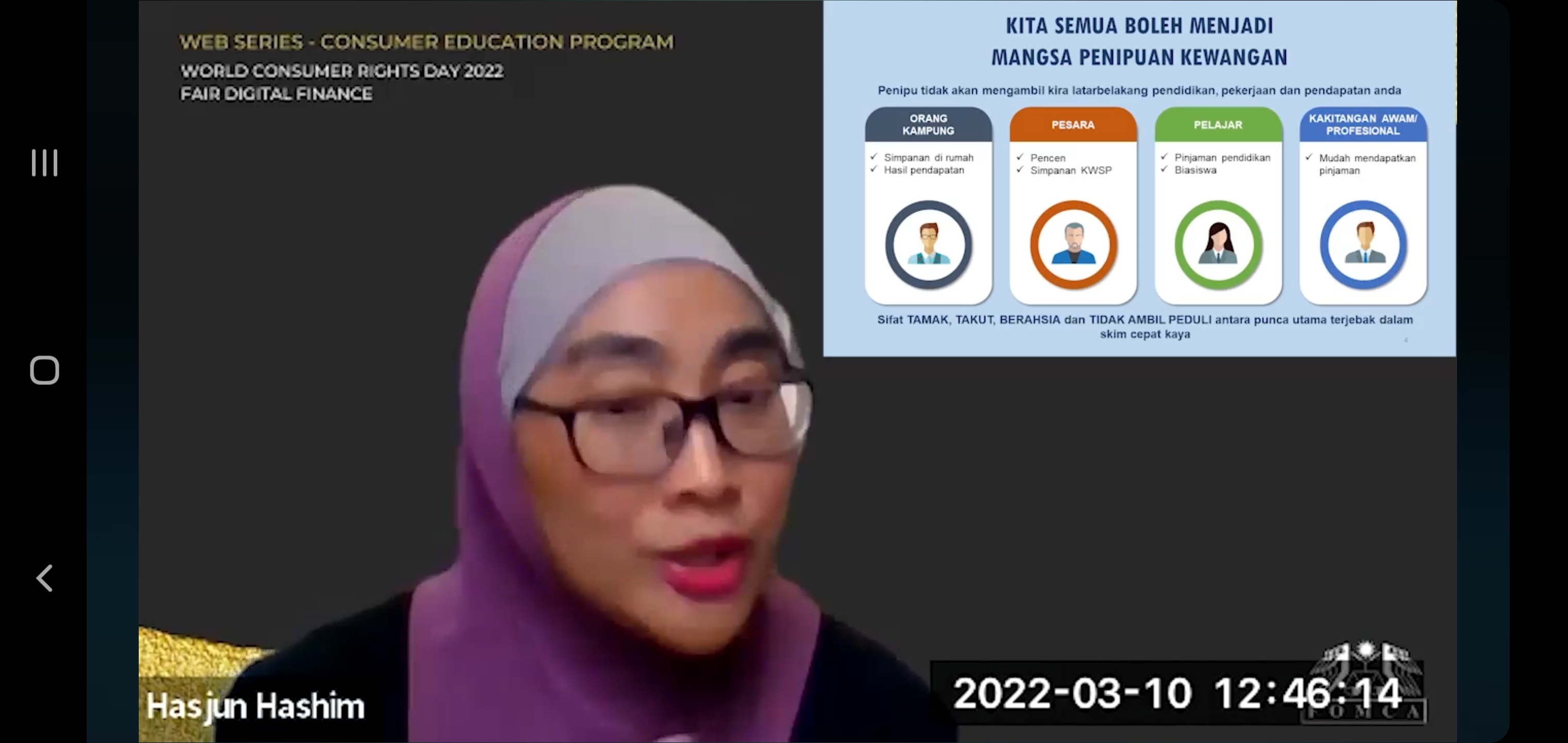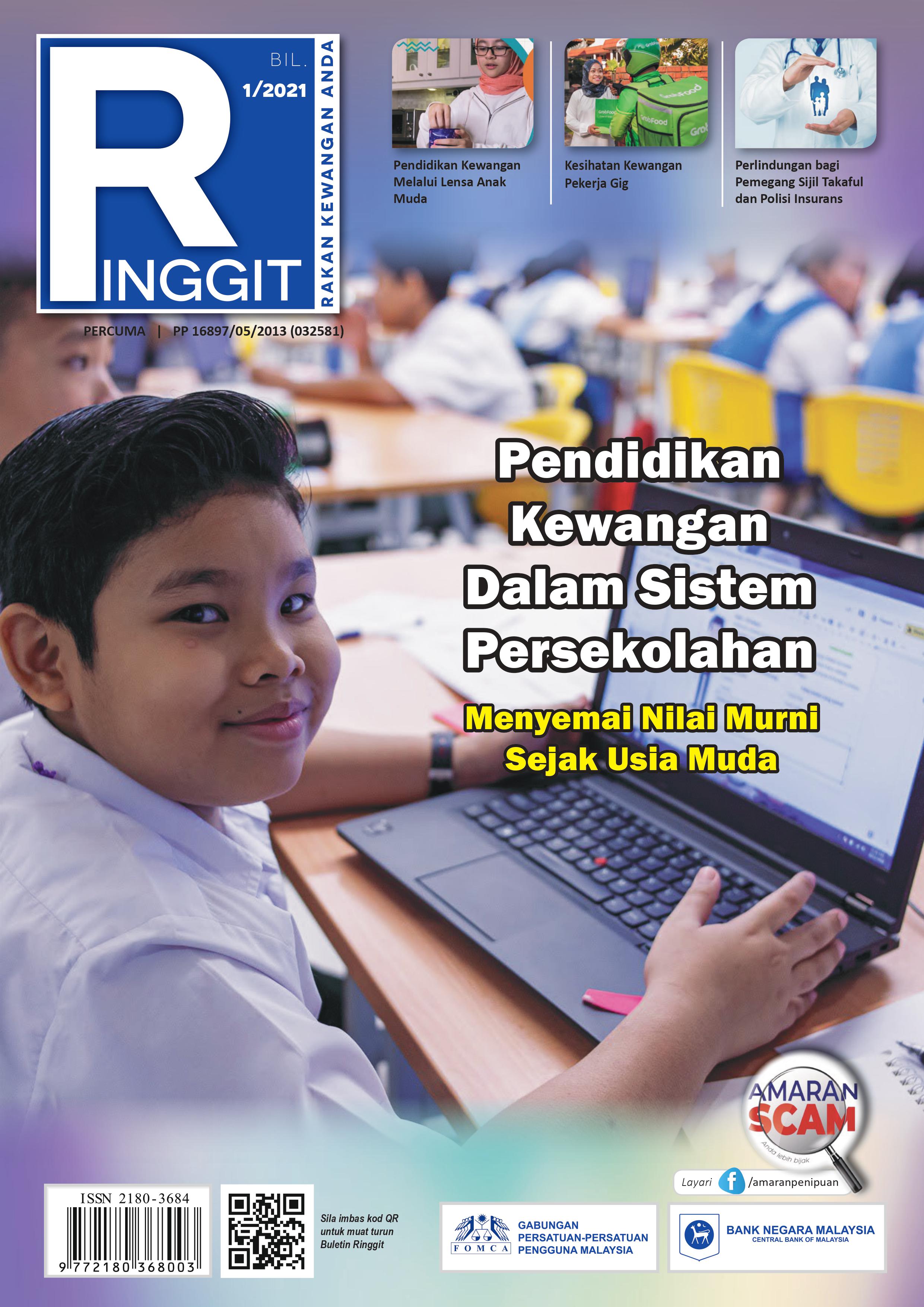It is heartening to finally see that the Transport Minister promoting the use of the bus system. While he has emphasised the need for consumers to use the bus system to reduce subsidies, the public transport in an urban system is far more critical than that.
In relation to cost of living, after food and housing expenses, transport makes up the third highest expenditure. Due to the inefficient and unreliable public transport currently, consumers are often forced to use their cars. It is estimated that households spend about 20 to 30% of their disposal income on private transport – instalments, petrol, services, maintenance, road tax, insurance, tolls and parking charges. An efficient public transport would contribute substantial savings to the households.
The core of the public transport system is the bus system. It is the “last mile” of the system – that is from home to office, or home to LRT station, or LRT station to the office. If the last mile of the public system is not reliable or worse not available, then consumers may have to use their private cars or taxis, which is often not affordable for low and middle income earners. Yet, the bus system has too often been ignored by policy makers. Too often we are emphasising on LRTs and MRT’s but not on the last mile. Worse still both in major and small towns, many communities have no bus service thus forcing the purchase and use of private cars.
For a public transport system to be popular, obviously it must be available. FOMCA urges the Ministry of Transport to undertake an audit of how extensive the current bus system is. We could even start in Seremban. Which are the housing areas which have access to buses and which of the communities have no buses plying their housing areas. A feasibility study can be undertaken to ensure a comprehensive bus system to ensure that all major housing areas are served by the bus system.
After the availability of the bus system, consumers would expect the buses to be reliable. Are they on time? For example can the system be relied on to make sure I can reach my office in time? Or is it going to be a case where one day it on time, the next day it is late. Reliability of the system is a critical issue in increasing bus usage.
In promoting public transport, these twelve components should be given consideration:
1.𝐴𝑣𝑎𝑖𝑙𝑎𝑏𝑖𝑙𝑖𝑡𝑦 (𝑤ℎ𝑒𝑛 𝑎𝑛𝑑 𝑤ℎ𝑒𝑟𝑒 𝑝𝑢𝑏𝑙𝑖𝑐 𝑡𝑟𝑎𝑛𝑠𝑝𝑜𝑟𝑡 𝑖𝑠 𝑎𝑣𝑎𝑖𝑙𝑎𝑏𝑙𝑒) 𝑎𝑛𝑑 𝑐𝑜𝑣𝑒𝑟𝑎𝑔𝑒 (𝑡ℎ𝑒 𝑝𝑜𝑟𝑡𝑖𝑜𝑛 𝑜𝑓 𝑎 𝑔𝑒𝑜𝑔𝑟𝑎𝑝ℎ𝑖𝑐 𝑎𝑟𝑒𝑎, 𝑝𝑜𝑟𝑡𝑖𝑜𝑛 𝑜𝑓 𝑐𝑜𝑚𝑚𝑜𝑛 𝑑𝑒𝑠𝑡𝑖𝑛𝑎𝑡𝑖𝑜𝑛𝑠 𝑖𝑠 𝑎 𝑐𝑜𝑚𝑚𝑢𝑛𝑖𝑡𝑦, 𝑙𝑜𝑐𝑎𝑡𝑒𝑑 𝑤𝑖𝑡ℎ𝑖𝑛 𝑟𝑒𝑎𝑠𝑜𝑛𝑎𝑏𝑙𝑒 𝑑𝑖𝑠𝑡𝑎𝑛𝑐𝑒 𝑜𝑓 𝑠𝑒𝑟𝑣𝑖𝑐𝑒)
2.𝐹𝑟𝑒𝑞𝑢𝑒𝑛𝑐𝑦 (ℎ𝑜𝑤 𝑚𝑎𝑛𝑦 𝑡𝑟𝑖𝑝𝑠 𝑎𝑟𝑒 𝑚𝑎𝑑𝑒 𝑒𝑎𝑐ℎ ℎ𝑜𝑢𝑟 𝑜𝑟 𝑑𝑎𝑦)
3.𝑇𝑟𝑎𝑣𝑒𝑙 𝑠𝑝𝑒𝑒𝑑 (𝑎𝑏𝑠𝑜𝑙𝑢𝑡𝑒 𝑎𝑛𝑑 𝑟𝑒𝑙𝑎𝑡𝑖𝑣𝑒 𝑡𝑜 𝑎𝑢𝑡𝑜𝑚𝑜𝑏𝑖𝑙𝑒 𝑡𝑟𝑎𝑣𝑒𝑙)
4.𝑅𝑒𝑙𝑖𝑎𝑏𝑖𝑙𝑖𝑡𝑦 (ℎ𝑜𝑤 𝑓𝑟𝑒𝑞𝑢𝑒𝑛𝑡𝑙𝑦 𝑠𝑒𝑟𝑣𝑖𝑐𝑒 𝑓𝑜𝑙𝑙𝑜𝑤𝑠 𝑝𝑢𝑏𝑙𝑖𝑠ℎ𝑒𝑑 𝑠𝑐ℎ𝑒𝑑𝑢𝑙𝑒𝑠)
5.𝐼𝑛𝑡𝑒𝑔𝑟𝑎𝑡𝑖𝑜𝑛 (𝑒𝑎𝑠𝑒 𝑜𝑓 𝑡𝑟𝑎𝑛𝑠𝑓𝑒𝑟𝑟𝑖𝑛𝑔 𝑤𝑖𝑡ℎ𝑖𝑛 𝑡ℎ𝑒 𝑝𝑢𝑏𝑙𝑖𝑐 𝑡𝑟𝑎𝑛𝑠𝑝𝑜𝑟𝑡 𝑠𝑦𝑠𝑡𝑒𝑚 𝑎𝑛𝑑 𝑤𝑖𝑡ℎ 𝑜𝑡ℎ𝑒𝑟 𝑡𝑟𝑎𝑣𝑒𝑙 𝑚𝑜𝑑𝑒𝑠)
6.𝑃𝑟𝑖𝑐𝑒 𝑠𝑡𝑟𝑢𝑐𝑡𝑢𝑟𝑒 𝑎𝑛𝑑 𝑝𝑎𝑦𝑚𝑒𝑛𝑡 𝑜𝑝𝑡𝑖𝑜𝑛𝑠
7.𝑈𝑠𝑒𝑟 𝑐𝑜𝑚𝑓𝑜𝑟𝑡 𝑎𝑛𝑑 𝑠𝑒𝑐𝑢𝑟𝑖𝑡𝑦 (𝑖𝑛𝑐𝑙𝑢𝑑𝑖𝑛𝑔 𝑟𝑖𝑑𝑖𝑛𝑔 𝑜𝑛, 𝑤𝑎𝑙𝑘𝑖𝑛𝑔 𝑡𝑜 𝑎𝑛𝑑 𝑤𝑎𝑖𝑡𝑖𝑛𝑔 𝑓𝑜𝑟 𝑠𝑒𝑟𝑣𝑖𝑐𝑒𝑠)
8.𝐴𝑐𝑐𝑒𝑠𝑠𝑖𝑏𝑖𝑙𝑖𝑡𝑦 (𝑒𝑎𝑠𝑒 𝑜𝑓 𝑟𝑒𝑎𝑐ℎ𝑖𝑛𝑔 𝑠𝑡𝑎𝑡𝑖𝑜𝑛𝑠 𝑎𝑛𝑑 𝑠𝑡𝑜𝑝𝑠, 𝑝𝑎𝑟𝑡𝑖𝑐𝑢𝑙𝑎𝑟𝑙𝑦 𝑏𝑦 𝑤𝑎𝑙𝑘𝑖𝑛𝑔)
9.𝑈𝑛𝑖𝑣𝑒𝑟𝑠𝑎𝑙 𝑑𝑒𝑠𝑖𝑔𝑛 (𝑎𝑏𝑖𝑙𝑖𝑡𝑦 𝑡𝑜 𝑎𝑐𝑐𝑜𝑚𝑚𝑜𝑑𝑎𝑡𝑒 𝑑𝑖𝑣𝑒𝑟𝑠𝑒 𝑢𝑠𝑒𝑟𝑠 𝑤𝑖𝑡ℎ 𝑑𝑖𝑠𝑎𝑏𝑖𝑙𝑖𝑡𝑖𝑒𝑠)
10.𝐴𝑓𝑓𝑜𝑟𝑑𝑎𝑏𝑖𝑙𝑖𝑡𝑦 (𝑢𝑠𝑒𝑟 𝑐𝑜𝑠𝑡𝑠 𝑟𝑒𝑙𝑎𝑡𝑖𝑣𝑒 𝑡𝑜 𝑡ℎ𝑒𝑖𝑟 𝑖𝑛𝑐𝑜𝑚𝑒 𝑎𝑛𝑑 𝑜𝑡ℎ𝑒𝑟 𝑡𝑟𝑎𝑣𝑒𝑙 𝑜𝑝𝑡𝑖𝑜𝑛𝑠)
11.𝐼𝑛𝑓𝑜𝑟𝑚𝑎𝑡𝑖𝑜𝑛 (𝑒𝑎𝑠𝑒 𝑜𝑓 𝑜𝑏𝑡𝑎𝑖𝑛𝑖𝑛𝑔 𝑖𝑛𝑓𝑜𝑟𝑚𝑎𝑡𝑖𝑜𝑛 𝑎𝑏𝑜𝑢𝑡 𝑝𝑢𝑏𝑙𝑖𝑐 𝑡𝑟𝑎𝑛𝑠𝑝𝑜𝑟𝑡 𝑠𝑒𝑟𝑣𝑖𝑐𝑒𝑠)
12.𝐴𝑒𝑠𝑡ℎ𝑒𝑡𝑖𝑐𝑠 (𝑎𝑝𝑝𝑒𝑎𝑟𝑎𝑛𝑐𝑒 𝑜𝑓 𝑣𝑒ℎ𝑖𝑐𝑙𝑒𝑠, 𝑤𝑎𝑖𝑡𝑖𝑛𝑔 𝑎𝑟𝑒𝑎𝑠)
By building an efficient and effective public transport system, the government would not only ensure that consumers reduce their dependence on private cars and more depend on public transport, thus increasing their disposal income; other benefits of a good public transport system are reducing traffic congestion, reducing parking congestion, reducing traffic accidents, reducing building of road and parking infrastructure costs, reducing excessive energy consumption as well as pollution emissions. Instead of spending billions on reducing tolls, that money could be spent to upgrade the public transport system.
Author:
𝘋𝘢𝘵𝘶𝘬 𝘋𝘳 𝘗𝘢𝘶𝘭 𝘚𝘦𝘭𝘷𝘢𝘳𝘢𝘫
Chief Executive Officer, FOMCA








